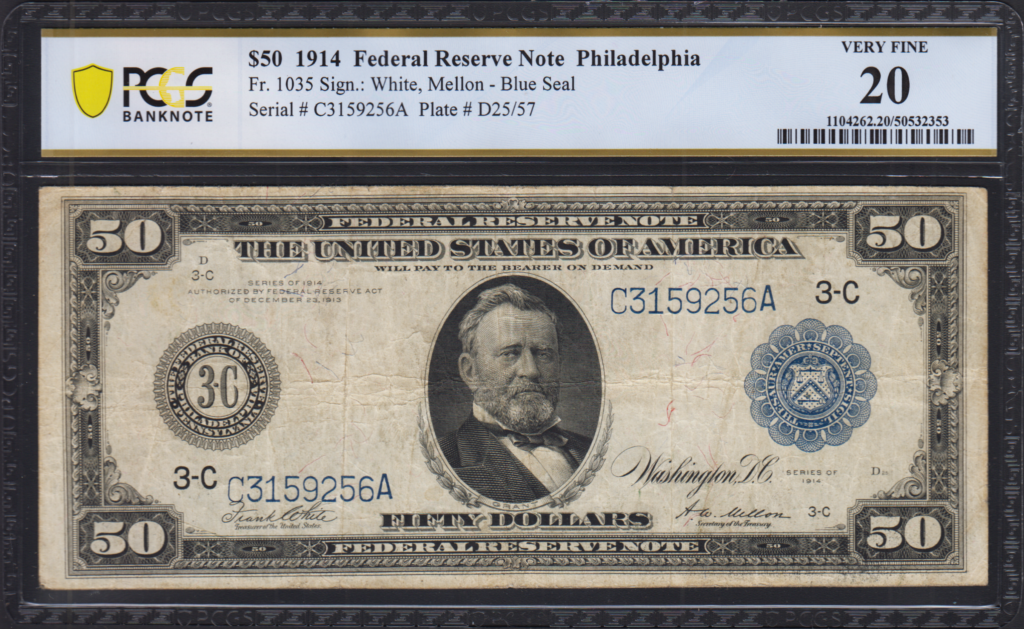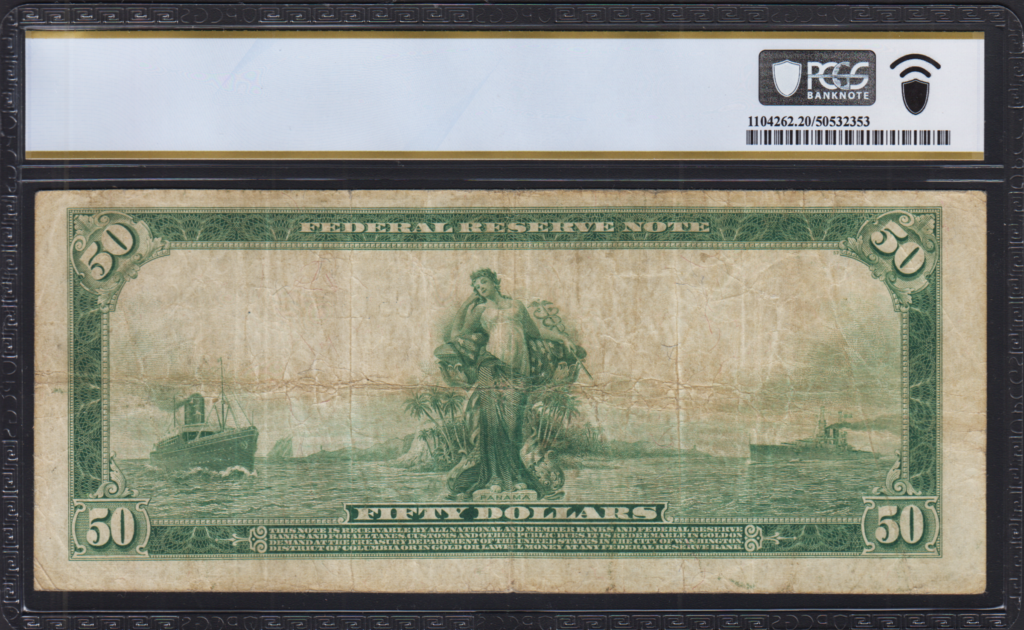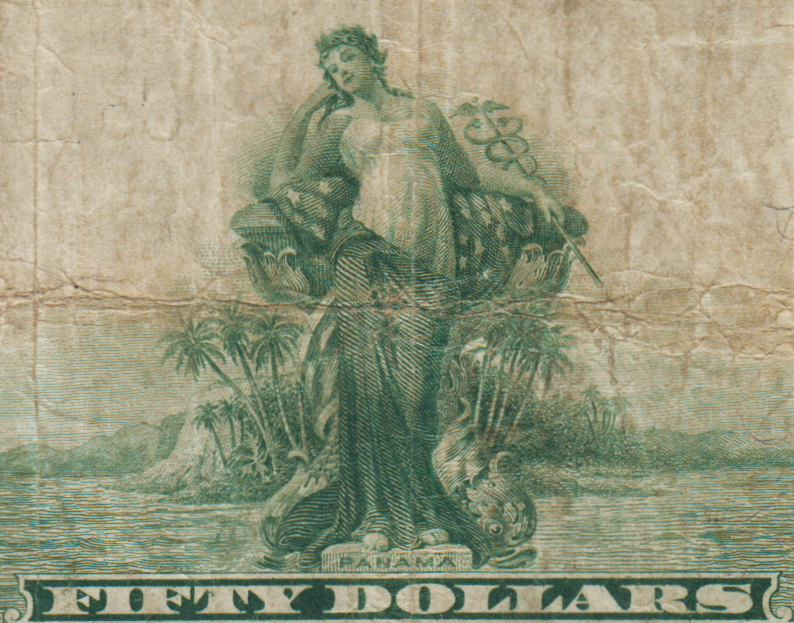
Introduction
The 1914 $50 Federal Reserve Note is a testament to the rich history of U.S. currency and is prized by paper money collectors. Its issuance coincided with profound changes in the United States and around the globe.

A World in Transition: The Era of the 1914 $50 Note
The Federal Reserve Act of 1913: The establishment of the Federal Reserve marked a pivotal shift in the U.S. financial system. It aimed to provide economic stability after decades of banking crises. The 1914 $50 note, one of the first series issued under this system, embodied the government’s commitment to modernize currency.
World War I (1914-1918): When this note was introduced, the world was on the brink of World War I. While the U.S. did not enter the war until 1917, the conflict significantly influenced global trade and economics. This note was part of the infrastructure that would later support wartime economic needs.
The Progressive Era: Domestically, America was undergoing rapid industrialization and urbanization. Progressive reforms sought to address inequality, improve labor conditions, and regulate industries—a spirit reflected in the allegorical imagery on the reverse of the note.
Technological Advances: Innovations such as the automobile, telephone, and early aviation were transforming daily life, symbolizing progress and the nation’s focus on advancement. These ideals are echoed in the note’s intricate design elements.
A Brief History of the 1914 $50 Federal Reserve Note
The 1914 Federal Reserve Notes marked the beginning of modern U.S. paper currency, issued following the establishment of the Federal Reserve in 1913. This $50 note was part of the first series, introduced to stabilize the nation’s financial system and facilitate commerce.
Unlike the gold and silver certificates of the era, Federal Reserve Notes were backed by the credit of the United States rather than specific reserves of precious metals.
Issued across 12 Federal Reserve Banks, each note bore distinctive identifiers. These included a letter and district seal, making them unique to their issuing region. The example in the image above was issued in Philadelphia. The 1914 series represents a pivotal shift toward the centralized banking system we know today.
Design Features of the 1914 $50 Federal Reserve Note
1914 $50 notes feature a striking and intricate design that reflects the artistry of early 20th-century engraving.
Obverse: The front of the note showcases a portrait of Ulysses S. Grant, the 18th President of the United States and Civil War hero. His image is flanked by ornate scrollwork and the Federal Reserve Bank seal, signifying the note’s origin.
Reverse: Two intricate vignettes dominate the back:
- Columbus at the Santa Maria: A nod to exploration and discovery, celebrating the enduring American spirit of ambition and expansion.
- Labor and Plenty: This allegorical scene reflects the nation’s prosperity, fueled by labor and abundant natural resources. It resonates with the Progressive Era’s focus on economic and social progress.
- Reference to Panama: The mention of Panama on the note’s reverse connects symbolically to the era of its issuance. This is because the Panama Canal was completed in 1914, the same year of these note’s release. The canal was a monumental achievement in engineering. It reshaped global trade and reinforced the United States’ emerging role as a dominant economic power.
This imagery ties into the broader themes of exploration, progress, and the interconnected world that defined the early 20th century.

The notes were printed in large-size format (measuring approximately 7.375 x 3.125 inches), a characteristic of U.S. currency prior to 1929.
Conclusion
The 1914 $50 Federal Reserve Note is more than just a piece of paper money from times past; it’s a historical artifact and a work of art. This particular example was recently placed with a customer, however, we constantly buy and sell pieces like these everyday.
To contact us with inquiries regarding buying and selling collectible paper money and more, Click Here
Want to see a comprehensive list of all the items we actively buy and sell on a daily basis? Click Here.
To view our other articles about a wide variety of coins, paper money, jewelry, precious metals, watches, & all other collectibles, Click Here.
If you’d like to stay updated on our weekly livestream sales, Click Here.
